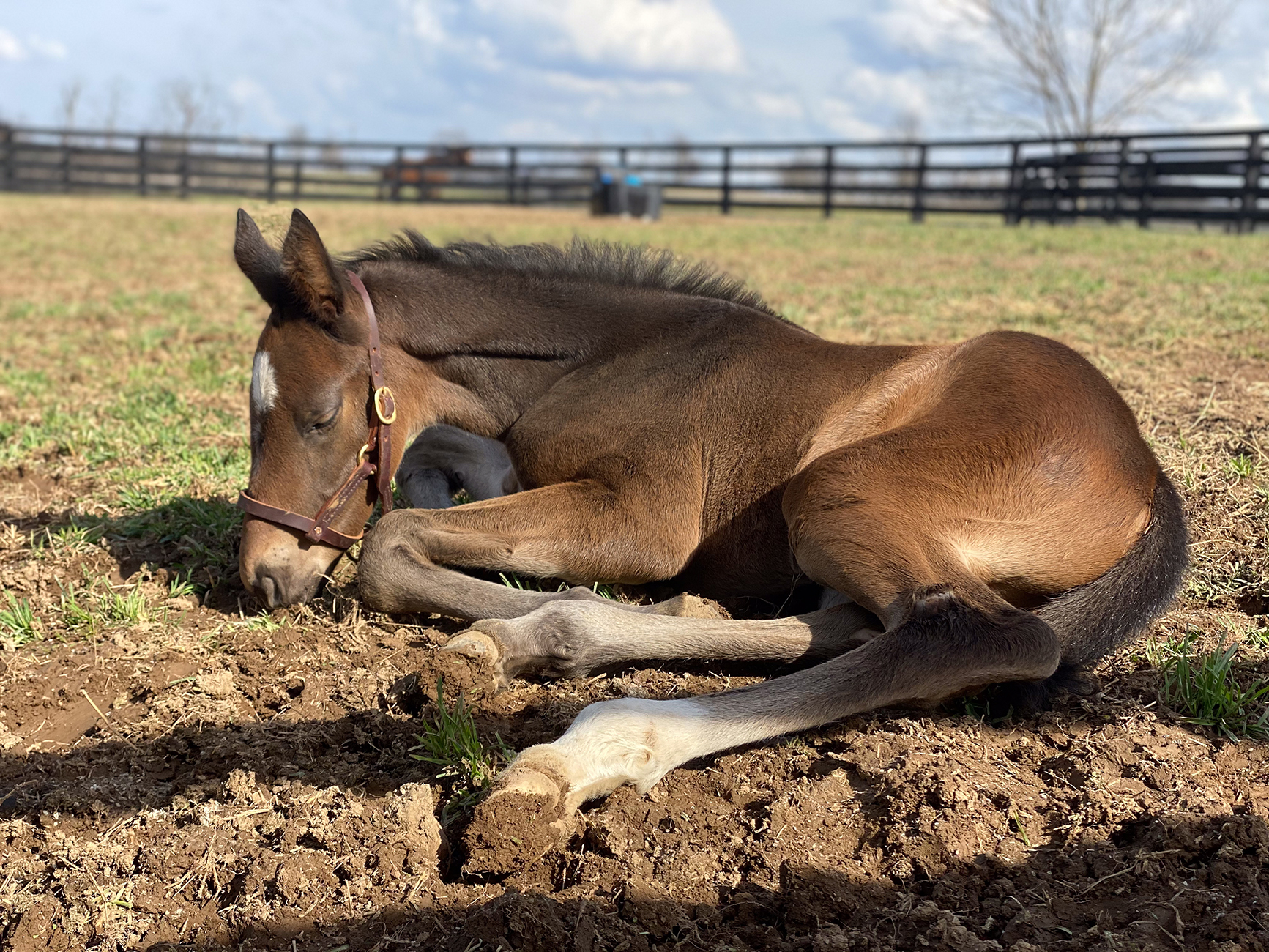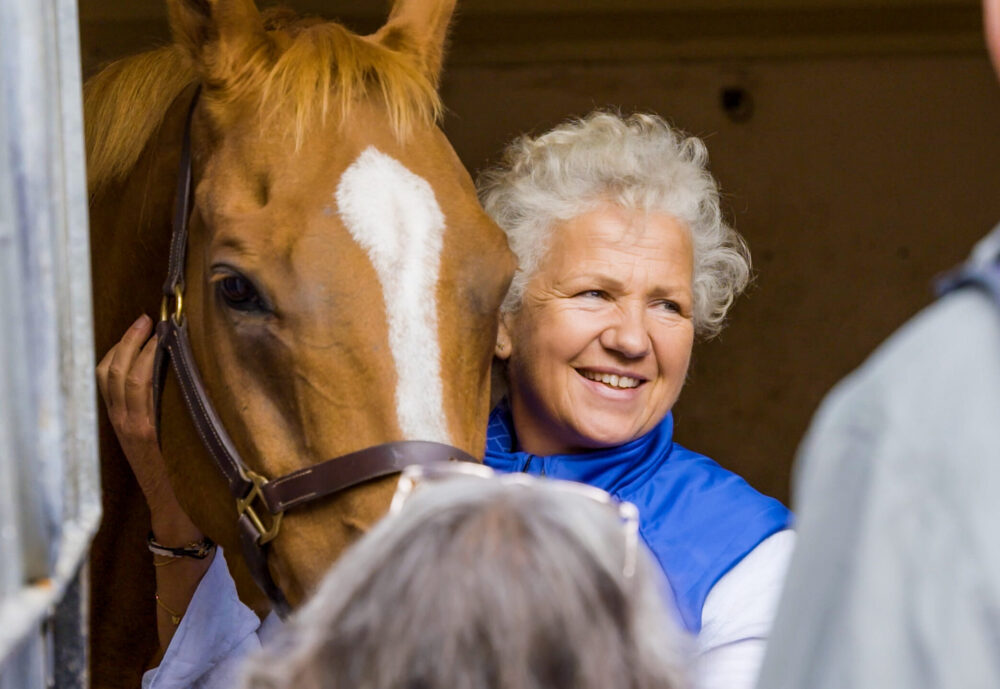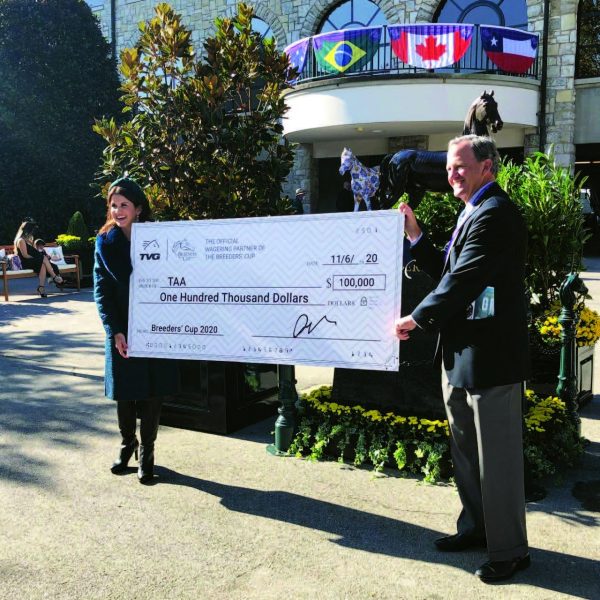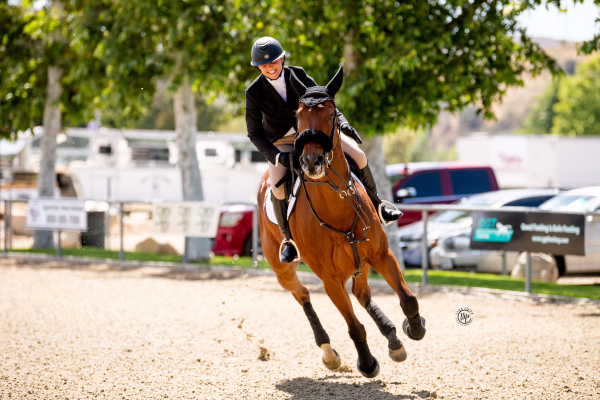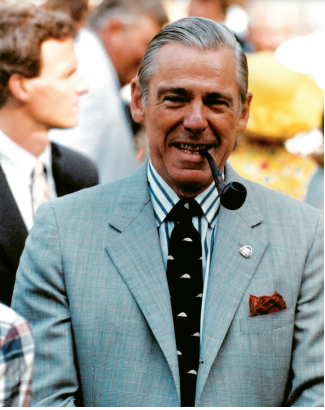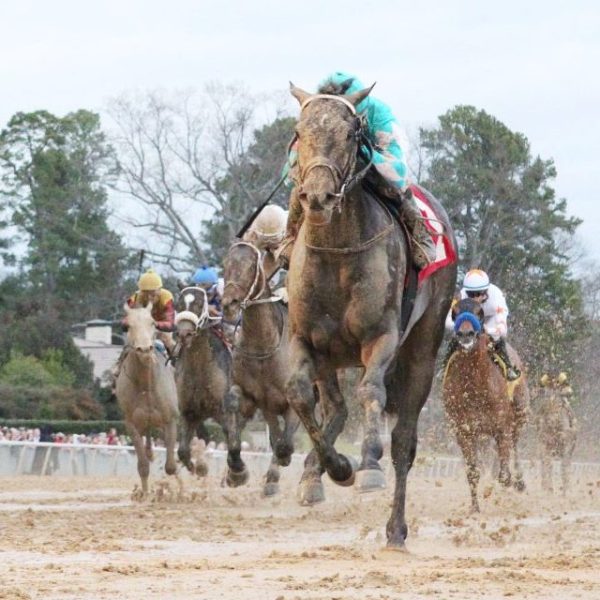BloodHorse Magazine
All Posts & News Press Releases Success Stories Aftercare Editorials Retraining Tips Supporter Features Inspector Spotlights Humberger Toggle Menu Previous Post The Importance of Traceability in Thoroughbred Racing & Aftercare This article was originally featured in the July 2024 Issue of BloodHorse Magazine in the Second Acts series. This article is the original format and text. To read the BloodHorse article or to subscribe click HERE. The Importance of Traceability in Thoroughbred Racing & Aftercare By: Samantha Smith September 11, 2024 Aftercare Editorials Tags:BloodHorse Magazine, Equine Safety, Equine Welfare, Horse Inventory, The Jockey Club, Thoroughbred Aftercare, Thoroughbred Aftercare Alliance, Traceability Mom’s Reward pictured taking a nap. Tracking a horse’s information and whereabouts throughout its life, known as traceability, is indispensable in horse racing. It’s vital for equine welfare, industry integrity, and accountability. In North American Thoroughbred racing, traceability is essential from birth to post-racing but poses persistent challenges. Effective inventory control should be a priority, reducing uncertainty about Thoroughbreds’ whereabouts. Thoroughbred Aftercare Alliance mandates inventory reports from accredited organizations, although only after horses reach these facilities. Thoroughbred Aftercare Alliance consulted with various racing professionals, gaining insights into traceability challenges and perspectives across the industry. Jill’s Story: A Breeders’ Quest for Traceability and Accountability Jill Pritchard, a dedicated equestrian and breeder, emphasizes the importance of traceability in racing. Her firsthand experiences underscore the challenges breeders face in ensuring the welfare and whereabouts of their horses. Jill shares both positive and negative anecdotes, illustrating where challenges beyond her control persist and improvements can be made. Despite her best efforts, she couldn’t trace some foals after selling them as yearlings, reflecting broader industry challenges in ensuring Thoroughbred welfare and whereabouts. Mom’s Reward pictured as a foal. Photo Credit: Amy Lanigan. Mom’s Reward Mom’s Reward is a tragic example of a horse lost in the system. A 2021 filly by Preservationist out of Ventoux. After her sale, the filly never had a published workout, let alone raced. Despite Jill’s attempts to contact the trainer, she received no response. Eventually, Jill learned that Mom’s Reward was euthanized due to a breakdown in training, though this information remains unconfirmed. The lack of traceability and communication left Jill feeling helpless. Unable to confirm the horse’s fate or reach the trainer, she could do nothing to assist Mom’s Reward. Kicksandgiggles pictured at the sales. Kicksandgiggles Kicksandgiggles, trained by Jeff Hiles, stands out as a success story amid the challenges of traceability. Kicksandgiggles is a 2020 gelding by Bernardini out of Driving Rain. Thanks to the help of Buff Bradley, Jill was able to connect with the trainer when she sold him as a yearling and maintain communication with Jeff Hiles throughout the horse’s career. Jill was able to get the horse back when Jeff was ready to retire him, and ensured he transitioned into training for a second career. Today, Kicksandgiggles lives happily with his new owner in Minnesota, a testament to the importance of open communication and accountability in ensuring the welfare of Thoroughbreds beyond the racetrack. Bottle Rocket Bottle Rocket, a 2012 colt by Intense Focus out of Shoes to Match, was sold as a weanling for $5,500 and went on to win over $226,000. His first owner and trainer kept Jill updated on his progress, but after he was claimed and moved out West, communication became difficult. Eventually, Jill learned from a trainer that Bottle Rocket was retired to the owner’s farm after his last race at Del Mar. Over two years later, he resurfaced at a Quarter Horse meet in Los Alamitos. Despite her best efforts, including speaking with the track steward and reaching out on social media through the Posse Foundation and various Thoroughbred groups, Jill was unable to get any updates from his connections or determine his whereabouts after his last race in January 2020. Kicksandgiggles as a foal with his mother. Kicksandgiggles playing in the field. Kicksandgiggles as a foal. Jill with Mom’s Reward. Mom’s Reward taking a nap. The Registration Process The Jockey Club is the breed registry for North American Thoroughbreds, and it outlines the eligibility rules and requirements for a foal to become a registered Thoroughbred. Since 2017, the implant and reporting of a microchip has been a condition of registration, and in 2018 Digital Certificates of Foal Registration were introduced, replacing traditional paper documents. Both initiatives were aimed at improving identification tools for Thoroughbreds, but also to enhance means of traceability. While these measures have been a welcome development for the Thoroughbred industry, the responsibility of updating ownership still lies primarily upon individual stakeholders. Best practices would see ownership being updated to The Jockey Club each time a horse is transferred, but compliance isn’t guaranteed. Beyond Racing Once a Thoroughbred’s racing career ends, tracking its post-racing journey can be additionally challenging. While the breed registry does not mandate reporting a horse’s retirement, a process is available through The Jockey Club, called Transferred as Retired from Racing, that enables an owner to retire a Thoroughbred from racing without affecting its breeding privileges. If a Transferred as Retired from Racing Thoroughbred is entered at a North American racetrack, racing officials are electronically notified that the horse is retired. In addition, it is free to transfer ownership of a Thoroughbred using The Jockey Club Registry’s Interactive Registration at registry.jockeyclub.com. In addition, once a horse makes it to a Thoroughbred Aftercare Alliance-accredited facility, there are mandatory requirements in place for reporting and managing horse inventory. “Thoroughbred Aftercare Alliance mandates inventory reports from all accredited organizations four times annually,” said Suzie Oldham, Thoroughbred Aftercare Alliance, Inspections Administrator. “This meticulous approach ensures that horses at each of the organization’s facilities are registered Thoroughbreds creating a traceable record of horses passing through the program and offering peace of mind to previous owners who may be seeking their equine companions.” Conclusion From birth to retirement, every horse deserves a clear and accountable journey. With industry-wide initiatives and advancements in technology, the goal of comprehensive traceability is within reach. As The Jockey Club’s traceability initiative
Read More >When professional Hunter/Jumper trainer Joyce Brinsfield of Ballyhigh Show Stable, Ltd. received a call from her long-time friend Paula Singer one day in March 2021, she knew she would soon be a part of a new journey.
After 25 years of friendship, it didn’t take much to convince Brinsfield to accompany Singer to Thoroughbred Aftercare Alliance-Accredited Kentucky Equine Adoption Center in Nicholasville, KY to meet SAVE ME PAULA- a 2017 Super Saver gelding in need of a new home.
Godolphin’s Lifetime Care Ensures Safety Net for Its Horses, Worldwide By: Alexandra Kokka Godolphin has cemented its place among Thoroughbred racing’s most renowned owners and breeders worldwide, demonstrating the possibility to achieve success at the highest level of the sport spanning four continents. The same world-class effort Sheikh Mohammed’s Godolphin has displayed in breeding and racing horses also applies to aftercare. The Thoroughbred Aftercare Alliance recently caught up with Godolphin’s strategic adviser for charities, Diana Cooper, to discuss the evolution of aftercare in the organization. “Since the very beginning of Godolphin, we have had an aftercare program that has evolved over the years,” Cooper recalled. “About seven years ago we became more proactive about formalizing the programs we had in each country under the Godolphin banner, and so the Godolphin Lifetime Care brand name came to fruition. Our objective is to create a greater awareness, passion, and care for these Thoroughbreds throughout their lives, to provide and encourage the best possible lifelong care.” Godolphin Lifetime Care representatives around the world were among those in attendance for these early meetings and annually hold court with aftercare and racing representatives. Every Thoroughbred who is a part of the flagship ownership entity has a safety net for the duration of its life, long after retiring from racing. “In each country where Godolphin operates, we have a lifetime care program that reflects the culture and fits in with the infrastructure of the industry in that country,” Cooper explained. “We are very proud to be able to promote the secondary careers of these horses around the world.” Because of differences in practices, policies, and demand for Thoroughbred aftercare among countries, GLC programs in Europe, Australia, United States, and Japan have individualized protocols. More than anything else, the depth of the GLC program depends on the level of preexisting aftercare infrastructure already in place in that racing jurisdiction. UNITED STATES In the U.S., Godolphin’s Lifetime Care program is overseen by Godolphin racing office and sales manager Emma Browne Lovatt, who has been under the Godolphin umbrella for 20 years. Although she wears many hats for the U.S. racing and breeding operation, Lovatt takes great pride in the success of the aftercare program. “The Lifetime Care program is a very important aspect of the business model: It’s part of the way we do business, and it has to be included in what we do,” Lovatt said. “Their racing career is the smallest part of their life, and we’ve got to try to ensure that the rest of their lives, whether it be the next 15 to 20 years, is somewhere they will be well taken care of.” Since 2014, Lovatt estimates she has helped rehome nearly 184 Godolphin horses. Horses are either rehomed directly following their letdown period or are transferred to an aftercare organization that provides retraining and adoption resources. “I have a wait-list of people interested in adopting Godolphin graduates—it’s ginormous,” Lovatt said. “I also use TAA-accredited New Vocations and the Secretariat Center.” Horses that transition through TAA-accredited organizations are protected under the TAA’s Code of Standards. Thanks to the preexisting infrastructure the TAA and its 81 accredited organizations provide, Godolphin horses that otherwise would be rehomed with no retraining have the opportunity to discover what discipline they are best suited for in building a foundation toward a second career. For example, Godolphin-trained gelding Regiment made two career starts and never broke his maiden. The decision was made to retire the son of Indian Charlie from racing, thus activating the next phase of his life—transitioning through the GLC program. Regiment spent six months in training at the Secretariat Center in Lexington, where it was quickly determined that, with the right adopter, “Reggie,” had the potential to be an upper-level eventer. Fast forward seven years to 2022, Regiment and adopter McKenzie Dey Cumbea have successfully completed numerous four-star events. EUROPE Across the pond sits Godolphin’s most in-depth Lifetime Care program, where retired racehorses receive rehabilitation as well as retraining for a second career. However, rehoming is not the only mission that the European Lifetime Care program serves. It also houses select retirees to help promote the path for retired racehorses. “In Europe our retraining program is based in the U.K.,” Cooper explained. “At our Newmarket retraining facility, we look after horses that have been particular friends to us. We retrain them, and they become our ambassadors.” Among the most beloved of the UK Lifetime Care program ambassadors is 2004 Ascot Gold Cup (G1) winner, Papineau. Just this fall, the now 22-year-old gelding launched the new school year at the Newmarket Academy, accompanied school children to pay their respects at the statue of Her Majesty The Queen, welcomed more than 790 visitors during the Sir Henry Cecil Open Weekend, and even brought joy to some patients at the Newmarket Hospital. “The horses that we’ve used for racehorse parades to be our flag-bearers include African Story and Prince Bishop, winners of the Dubai World Cup (G1), Ascot Gold Cup winner Papineau, and (trainer) Charlie Appleby’s Melbourne Cup (G1) winner, Cross Counter,” Cooper said. AUSTRALIA Similar to Godolphin’s efforts in America, the GLC program in Australia provides direct rehoming or retraining, depending on each horse’s needs. The southern hemisphere operation also maintains flag-bearers to represent Godolphin during race parades and open houses. “In Australia, the majority of horses that we rehome fit into programs that already exist,” Cooper explained. “These programs really suit the industry and adapt our horses as much as possible for their future careers. Hartnell was a champion racehorse and is now a champion in aftercare competitions.” JAPAN Yasuko Sawai has been with Godolphin for 16 years, first working in the Darley Japan foaling barn for 10 years before taking on the responsibility of managing the Japanese GLC program in 2015. “We do our Lifetime Care program two ways. One, we have a rehoming program for our racehorses and, two, we want to improve aftercare by educating racing people,” Sawa explained. “We have rehomed around
Read More >Thoroughbred Aftercare Alliance to Ring-in Anniversary at Breeders’ Cup By: Alexandra Kokka For a long time many in the racing industry gave little thought to the welfare of a Thoroughbred after it finished its racing career but that mind-set has changed in recent decades. The late 1990’s and early 2000’s saw a number of unfortunate incidents on and off the racetrack involving horse racing legends such as Exceller, Ferdinand, Barbaro, and Eight Belles. The losses of these horses and others not only affected the racing industry, but rallied equine welfare advocates and shaped the general public’s opinion as well. As a result, equine welfare organizations began sprouting across the United States, but these organizations went unregulated and underfunded. Spurred by the crisis before them, major racing industry pillars began conversations on the best ways to combat racing’s poor public perception and ensure racehorses have a safe and dignified life upon retirement from racing and breeding. In October 2011 a strategic planning session was held at Keeneland’s Keene Barn to formalize an actionable plan to protect equine athletes and ultimately horse racing. In attendance were leaders from Breeders’ Cup, Keeneland, and The Jockey Club, among others. Out of this meeting came the idea for a new association on the issue. By 2012 the Thoroughbred Aftercare Alliance was founded. Funded initially by seed money from Breeders’ Cup Ltd., The Jockey Club, and Keeneland, the TAA declared a mission to accredit, inspect, and award approved aftercare organizations grants to retrain, retire, and rehome Thoroughbreds through funding derived from all aspects of the racing industry. In the 10 years since its inception, the TAA has remained true to its objective. California Retirement Management Account (CARMA) founder, Madeline Auerbach, and Breeders’ Cup executive vice president and chief racing officer, Dora Delgado are among those instrumental in the TAA’s formation. They fought tirelessly for a decade to facilitate the TAA’s growth and stature within the industry, and are still active supporters of it today. As such, what two better people to sit down with to reflect on the past 10 years of unprecedented progress, ahead of the TAA ringing in its tin anniversary at the 2022 Breeders’ Cup World Championships hosted by Keeneland. AK: How much has the landscape changed in 10 years? MA: It’s hard when people weren’t around at that time to understand what happened. You have to put yourself in the frame of mind of going back 10-plus years. The industry always has problems, but we had very serious, very dangerous to our business problems with what happened with Eight Belles and things of that nature. The industry was in a crisis … Now we can point to the things that we do as an industry, and it’s vital that the industry has a spokesperson, a spokes-entity, where these media outlets can go when they want information. I think most people would say that The Jockey Club, Keeneland, and Breeders’ Cup are major leaders in the industry. We needed those three entities together. They are three parts of the stool that supports our industry— the racing industry—and they had to be on the same page. At the time, the Breeders’ Cup was under Craig Fravel’s leadership. They were 100% in, just as Keeneland and The Jockey Club were. AK: Without question, the Thoroughbred Aftercare Alliance would not have gotten its feet off the ground without the Breeders’ Cup, The Jockey Club, and Keeneland stepping up with initial donations of $100,000 each. What was the significance of Breeders’ Cup being a seed money donor for the TAA? DD: The idea was broached to have an accreditation process for some of the retirement homes that were already out there and for new ventures that wanted to get involved. We knew there was some groundswell movement, and I think all of this really had stemmed from the tragedy [of Ferdinand] over in Japan. It opened people’s eyes that we need to take care of these horses. So I think for us [at Breeders’ Cup], it was a really easy step—to say we want to do something, to say we want to be part of something bigger and have the industry come together and make sure we give horses a soft landing when they retire from the racetrack. MA: That seed money is the only reason the TAA exists. We wouldn’t be here without the $100,000 each from those three entities. It never would’ve taken off the ground because nobody would’ve had the money to start it. In essence, those three organizations put their money where their mouth was and they turned it over to those of us that were trying to put it together and trusted us to spend it cautiously, wisely, and correctly. Over the past decade the TAA has worked steadily to increase the amount of accredited aftercare organizations under its umbrella and the number of donors within the racing industry to supply the grant funding for retired Thoroughbreds being cared for by those organizations. However, the TAA did not immediately explode on the scene in terms of horsemen’s understanding as to how it differed from every other aftercare nonprofit. The Breeders’ Cup recognized this struggle early on and knew it had to be one to show the rest of the industry who the TAA was and why the organization deserved support. AK: In what ways have Breeders’ Cup and TAA worked together in the past 10 years? DD: Initially when the TAA first got started, there was a stallion funding mechanism. Since we were already involved in billing stallions for the Breeders’ Cup, that was part of our early, initial efforts to help. We also tried to include ads in whatever publications we were doing. We’ve become much more focused on that in recent years. As we’ve had vehicles created to help push the Breeders’ Cup messaging, it’s a very easy thing to add on: ‘Please support the TAA.’ The work is so important. All of our outgoing nominations messaging has a
Read More >The life of a racehorse comes full circle, thanks to the many individuals who saw the potential in one retired Thoroughbred. Anyone in the horse industry can attest that no matter how much thoughtful planning and hard work are put into caring for a horse, things can change in an instant—for better or for worse. Luckily, sometimes unexpected changes are just an opportunity to gain a different perspective. Crosscheck Carlos could have been a great racehorse, but through a series of good and bad events, he was given the opportunity to experience life from a new point of view. Bred by Allen Guillotte Jr., Crosscheck Carlos was foaled in 2015 out of stakes-placed Weepnomoremylady (by Summer Squall). A half brother to Louisiana Cup Distaff Stakeswinner Flower Lady (by Flower Alley), Crosscheck Carlos was acquired by Erik Johnson and Dennis O’Neill at the Ocala Breeders’ Sales March 2-year-olds in training auction for $37,000. The son of Custom for Carlos made most of his eight career starts for trainer Doug O’Neill, under the ownership of Johnson’s ERJ Racing, Slam Dunk Racing, and Neil Haymes. True to his Louisiana-bred roots, in his second start Crosscheck Carlos won the $100,000 D. S. Shine Young Futurity at Evangeline Downs. “Crosscheck was a very willing, athletic, and competitive horse; the type to separate himself from the pack,” Doug O’Neill recalled. “He was a real pleasure to work alongside.” Unfortunately, after finishing second best in his 3-year-old debut, the stakes winner suffered a career-ending sesamoid fracture. Despite the uncertainty a diagnosis of that severity can bring, Crosscheck Carlos had all the right people on his side. “You take on the responsibility and the honor to work alongside these amazing horses and you take care of them every day they’re with you,” O’Neill said. “When they no longer race due to ability or injury, it’s our responsibility to help them move forward in the next chapter of their life.” Unbeknownst to “Carlos,” he’d already caught the eye of Brooke Abbard during his time on the track, and she was ready to give Carlos the soft landing he needed to get back on his feet. “I took Carlos from Doug O’Neill right after his injury,” Abbard said. “I specifically asked for him because I knew him from the barns. I manage a racing stable at the track, so I’m around all the racehorses all the time and Doug O’Neill is one of our trainers.” Abbard transported the 3-year-old to her barn off of the track where they began the long road to recovery. In time, Abbard hoped Carlos would make a dependable trail partner. “You never know how the sesamoid is going to heal; if it’s going to heal perfectly or if they’re not going to be able to have a second career,” Abbard said. “He stayed in a stall in my barn. I hand-walked him three times a day, wrapped it and unwrapped it every day. A lot of work went into healing him successfully.” After nearly two years with Abbard, Carlos’ playful, intuitive nature shone bright. It was apparent the gelding was ready for his next adventure. “Carlos was a special horse,” she said. “He would help me rebed his stall every day. I would just throw a bag of shavings in there and he would undo the bag and fluff his own stall for himself.” Abbard did more than just heal his injury, she ensured Carlos was prepared to find his forever family. Enter Manon Prat, wife of successful jockey Flavien Prat. Before moving to the United States, Manon Prat grew up in France, competing in show jumping and eventing, but her passion for the track eventually took over and she made the decision to pursue exercise riding full-time. She worked on the backstretch as an exercise rider both in France and the U.S. for nearly 10 years. After the birth of their first child in 2018, Prat made the tough choice to quit galloping and focus more on her family. Prat felt at a loss without riding on a daily basis, so the new mom decided to trade in morning breezes on the track for something a little slower—an off-track Thoroughbred. “Horses are my life; that’s something I need, I’m not whole if I don’t have that,” Prat explained. “My husband told me, ‘If you want a horse, I know you like jumping, so maybe you should start jumping again.’ Then, we started looking to get a horse.” Prat began getting back into the swing of English riding with fellow racetracker Maria Falgione, who was retraining two off-track Thoroughbreds and would have Prat out to ride with her. Around the end of 2018, two worlds collided when Abbard sent a certain recently rehabbed stakes winner to Falgione for her to consider buying. With two horses already on her plate, Falgione called Prat, suspecting Crosscheck Carlos might be just what she is looking for. “Maria had two horses at the time that I would ride,” Prat recalled. “They were nice horses, but for whatever reason, I had no attachment to them and they were for sale as well. But you know that kind of thing where you just get on a horse and get that feeling? When I got on Carlos, I really, really liked him. He’s everything I was looking for in a horse.” Crosscheck Carlos was home. One can’t help but admire the synchronicity. Prat and Carlos each went through huge changes in their livelihoods over the past two years, involving changes to their physical and mental selves, but each leaned on the connections they had made along the way, ultimately leading to one kismet moment. As if that weren’t serendipitous enough, when Flavien asked his wife the name of the bay Thoroughbred who had captured her heart, another connection was realized. “Flavien was the first jockey Carlos had on his back and the jockey he won his first race with,” Manon Prat explained. “That was pretty cool because we had no idea
Read More >Few in racing can say they have accomplished more for retired racehorses than the late John Hettinger. After nearly two decades working abroad–first in corporate sales and marketing, then in real estate development where he ultimately made his fortune–Hettinger and his wife, Betty, returned in 1973 to take over Akindale Farm for John’s father. Located just north of New York City, Hettinger transformed the 55-acre farm into an 800-acre Thoroughbred breeding and racing operation complete with a training track, shedrows, turnout paddocks, and more. The Yale University graduate campaigned numerous homebred multiple graded stakes winners; however, more notable than his influence as a breeder were his contributions to the sport as a whole. “John was essentially a white knight in 1991 when he and his family became the largest shareholders in Fasig-Tipton as it underwent restructuring,” said Fasig-Tipton president and CEO Boyd Browning. “John, as a human being, a shareholder, and a board member had more integrity and understanding of what’s best for the industry than most. He was an exceptional person of unbelievable character, of unbelievable guidance, and always wanted to make sure things were done the right way. He was a fantastic human being and a major influence on Fasig-Tipton and me personally.” Two years before Hettinger’s death in 2008, he transitioned 200 acres of Akindale Farm to be a sanctuary and an adoption facility for retired racehorses and formalized a succession plan to ensure its continued operation long after his life. “He didn’t just talk the talk; he walked the walk,” Browning said. “During his planning for when he passed away, it was important for John to make sure that Akindale was utilized for retired horses. John also provided financial support for the aftercare program after he had passed. He was a true believer who took action to support what he believed and what he said.” Thanks to such planning, Hettinger’s intuitive vision and unwavering devotion to off-track Thoroughbreds live on as hallmarks of Akindale Thoroughbred Rescue. Hettinger was awarded a Special Eclipse Award in 2000 and eventually was inducted into the Hall of Fame in 2019 for his numerous initiatives to support aftercare organizations and the off-track Thoroughbreds they serve. In 2000 he spearheaded the National Thoroughbred Racing Association’s inception of the Racehorse Adoption Referral Program, and in 2001 he founded Blue Horse Charities. “I think John was the godfather; the person who really took the torch and raised the bar in terms of the industry’s understanding of aftercare,” Browning said. “He was a very vocal opponent of slaughter in the United States. He cared deeply about horses and was a founding father of the aftercare movement.” Over the past decade the racing industry has faced many challenges, especially those relating to the welfare and aftercare of its equine athletes. The development of the Thoroughbred Aftercare Alliance in 2012 is one of the industry’s leading achievements and is a testament to the shared desire to ensure a safety net. For industry participants interested in moving these efforts forward, a detailed succession plan is a vital component. It’s a requirement of TAA-accredited charities. “The main reason we ask for proof of a succession plan is, we want to make sure that the horses have someone who can take care of them if the person who oversees the organization is gone–whether through sickness, death, or whatever the circumstance–if it means they have to be off for a certain period of time,” said TAA accreditation and grants manager Janice Towles. “At the end of the day, you definitely want to make sure that someone else knows what’s going on besides the main person.” Towles said such planning is especially important with smaller operations. “What we’ve found is that a lot of these operations are a one-person show and everything that they knew, they had in their head,” Towles said. “Unfortunately, if they weren’t there or an emergency broke out, they took that information with them. The biggest thing is that the organization does not become awash because nobody knows the operational side of things if the head or the founder is not there.” In general, there are a few key components for consideration when composing a comprehensive succession plan for an aftercare charity: defined roles for all staff, board members, and volunteers; short-term vs. long-term absences; planned vs. unplanned absences; and loss of a facility. Chain of command succession, cross-training staff, and maintaining an up-to-date, detailed operational guidebook are considered TAA best practices. Located in Greenwich, N.Y., ACTT Naturally was founded in 2013 by lifelong animal advocate and exercise rider Valerie Buck. Despite having a comprehensive background working with on- and off-track Thoroughbreds, Buck hadn’t yet considered the necessity of a succession plan prior to applying for TAA accreditation. “When I was filling out the accreditation application for the Thoroughbred Aftercare Alliance, they wanted a plan of succession, and I had to Google what a plan of succession was,” Buck recalled. “I applied for accreditation in 2019, so that’s when I put our first succession plan together.” Having realized the toll her absence could have on the horses in her care, Buck and the ACTT Naturally team worked quickly to develop a plan. Thankfully, the organization already had the necessary reliable partners, and now everyone knows what the plan of succession is, should it ever be needed. “It’s not like you can just close the shades for a while and walk away– [ACTT Naturally] is a constant living, breathing machine and the animals need to be cared for daily,” Buck said. “If something happens to me, there needs to be a plan to keep this organization going to continue rescuing horses. We sat down with the board and some of our core volunteers and put together a plan to make sure that if something ever happened that these horses are safe.” In this age, many horses live upward of 25 years. The residents of TAA-accredited Our Mims Retirement Haven had more than modern medicine to keep them bright-eyed
Read More >If you own a Thoroughbred in training, you most likely have heard of the many aftercare options available to you and your racing community. With 82 Thoroughbred Aftercare Alliance (TAA)-accredited organizations across North America and many supporting triage programs at major racetracks, the transfer of a retiring Thoroughbred can be seamless. One concern in this process is ensuring a retired horse will not be entered in a race under new connections. Often a retired horse will be transferred from the track to a trainer or an organization, but the foal certificate is left active. This misstep is a liability for the racing connections, but more importantly, it can be a threat to the horse’s safety. There are protocols in place to prevent this from happening. All TAA-accredited organizations have an adoption contract, which states the horse is being sold as “Not for racing.” However, the process that officially ensures the horse’s Jockey Club certificate will be made inactive for racing must be filed through The Jockey Club’s Registry Office. The Jockey Club registrar Rick Bailey explained the “Sold as Retired From Racing” process, which notifies North American racetracks of the retired status for Thoroughbreds. “If an owner wishes to mark their certificates as ‘Retired From Racing,’ there’s a process to do that for Thoroughbreds that are registered with The Jockey Club,” Bailey said. “It involves returning the completed form, which includes the notarized signature of both parties, photographs so that we can verify the identity of the horse, and The Jockey Club Certificate of Foal Registration to our office so that it can be recorded and stamped accordingly.” All of the necessary information and the “Sold as Retired From Racing” form are readily available online at www.registry.jockeyclub.com/registry. “Some tracks are more aware of the retired process than others—certainly the aftercare organizations are much more aware and a good number of the ‘Retired From Racing’ horses that we receive are from aftercare facilities,” Bailey said. A seasoned veteran of the “Sold as Retired From Racing” process, TAA-accredited Second Stride executive director Kim Smith shares her perspective as an aftercare facility taking in recently retired Thoroughbreds who still need their TJC papers to be stamped as inactive. “Second Stride transitioned 143 Thoroughbred sport horses to new homes last year for many types of post-racing uses and jobs,” Smith said. “We received foal certificates from the donating connections either digitally or in hard copy for approximately 40% of the horses.” TAA-accredited organizations such as Second Stride sometimes face a challenge in tracking down the Certificate of Foal Registration. “Often the papers are at a racetrack already closed for the meet. They’re left behind or transferred to the next track,” Smith said. “We often hear they were left in a van driver’s glove box. “So far this year we have had four out of 20 horses arrive with foal papers and a notarized form ready for executing to The Jockey Club ‘Sold as Retired From Racing’ database,” Smith said. “This year we started sending The Jockey Club ‘Sold as Retired From Racing’ form link to all our donors; we ask it be executed upon entry.” With the introduction of digital certificates, beginning with the 2018 foal crop, thankfully this issue is on the decline as Thoroughbreds with paper certificates age out of racing. Aside from the ‘Sold as Retired From Racing’ form, TAA-accredited organizations take additional precautions to provide a safety net for horses adopted from their organization. “We provide strict ‘No Race’ language in our adoption contracts,” Smith said. “Second Stride places our horses in the Equibase Virtual Stable Mail to be notified if a horse has published works or races. We then can proactively try and find out what is going on for any alerts. Usually it is a name similar to that of another horse currently working. This past Thanksgiving morning we had 2018 Kentucky Derby (Presented by Woodford Reserve [G1]) runner My Boy Jack show up with a published work. He was transitioned through our program and his adopter actually allows us to use him as an ambassador horse on tours, so we knew right where he was. We were able to reassure the prior connections that he was well and grazing on the farm.” Many TAA-accredited organizations also are careful to safeguard their adopted horses from going to slaughter by having clear language in their adoption contracts. Furthermore, the adopter agrees to include the same “No race or slaughter” language in any future sale contracts. “The adopted horse is placed with a lifetime ‘Not for race or slaughter use’ clause,” Smith said. “The adopter agrees that neither they, nor any future person or owner, shall race or slaughter the adopted horse, sell the adopted horse for race or slaughter use, or cause the horse to become available for purchase at an auction that could place the horse at risk of slaughter or race use.” While it is trickier to reclaim an OTTB at-risk of slaughter, Kim Smith’s team has a solid plan in place if an adopted horse shows up on the track. “The ‘bat’ phone starts ringing,” she said. “We would immediately notify the stewards of the related tracks, the track ownership, the track vets, and The Jockey Club. We can readily provide our paperwork and vet work to establish the situation and request the horse be put on the steward’s/track’s ‘No race’ list. We can also request that our attorney submit a ‘cease and desist’ letter to the person(s) in question, as well as to the other related parties. Our contract language also has provisions for return of the horse to Second Stride, and legal work can be started for that as well.” While TAA-accredited organizations do their best to provide a safety net for our industry’s athletes with or without the “Sold as Retired From Racing” form, the nonprofits end up spending considerable time, money, and resources that could otherwise go toward caring for more horses. “We find horsemen and owners are making a mental
Read More >





